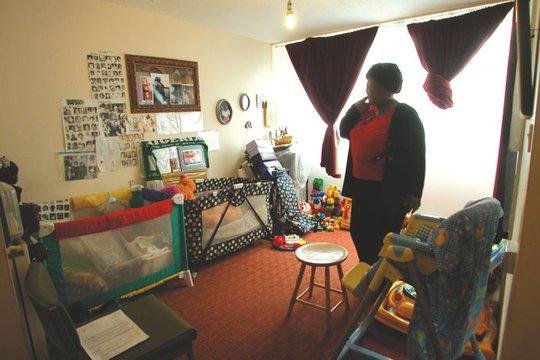Why is the Workhome important in the C21?
This research has found home-based work to be a popular practice. Of the 76 interviewed, across the social spectrum and in diverse occupations in urban, suburban and rural contexts in England, only five were not in favour of this practice and would have 'gone out to work' if they had the option. In the UK, census returns show that the number of people 'working mainly at home' doubled between 1991 and 2010. This research estimates that a quarter of the UK overall working population lives at their workplace or works at home for a minimum of 8 hours a week. Most live and work in spaces and buildings that have not been designed around the dual use. This can lead to frustration, inefficiency and stress.
Home-based work is beneficial to society in many ways, but home-based workers also report disadvantages, primarily social isolation and a lack of exercise. We need to create a culture and a built environment that encourages and supports this working practice, while reducing the impact of its potential draw-backs.
Enterprise Nation [http://enterprisenation.com] is a resource for people starting and growing a business at home in the UK. In 2007 they launched a Savings Calculator, to demonstrate the savings in time, money and carbon emissions that can be made working at home. They found that home-based workers save on average £4,392 in travel costs, 564 hours of commuting time (equal to 23.5 days) and 2937 kg of carbon emissions per year.
Family-friendly
Many members of the home-based workforce work at home or live at their workplace because it enables them to combine paid employment with their caring responsibilities. Half the sample of 76 home-based workers from urban, suburban and rural contexts who participated in the underlying research interwove a caring responsibility with their work. This ranged from the MD of a manufacturing company who had set up his business so he could help his partner with their severely disabled child, or a hairdresser who had started a home-based salon when she became a single parent, to an alternative health practitioner who cared for her elderly mother in an adjacent flat.
The flexibility involved in home-based work reduces stress on the individual and the family. Work can be rearranged around a sick child or a dental appointment. In a speech in May 2006, Sir Christopher Bland, chairman of the BT Group said:
“At BT, flexible working is business as usual. Already seven out of 10 people work flexibly and nearly 10% are home- based. It has saved the company millions in terms of increased productivity and cut costs. It has also motivated our people and released more potential.”
The UK government is slow to recognise the potential of this working practice nationally. In the USA 53% of small businesses are home-based. $427bn annually is generated by these 'hompreneurs', 8% of which generate revenue of above $500,000 and 35% of which above $125,000 annually [ref. info@innovationamerica.us ]. More than half all businesses in the UK start-up from home. However, the governance problems around the inhabitation of workhomes in the UK are such [see policy and governance] that most home-based workers prefer to operate 'inconspicuously'. This is either because they fear they are breaking a regulation [even if they are not], or because they are actually in contravention of some policy.
Environmentally sustainable
It is not clear how the legally binding targets for the reduction of UK carbon emissions, as set out in the Climate Change Act 2008, will be met. Scaling up home-based work offers one potential mechanism. Thirty percent of UK surface emissions are currently caused by travel to and from work. This research suggests that home-based work has the potential to impact on this. Home-based work reduces annual commuting mileage and therefore has the potential to contribute to a reduction in carbon emissions. Two case studies highlight this:
At the macro-scale, a British Telecom manager reported that he had reduced his car-use by 20,000 miles per annum on becoming home-based. BT has around 10,000 home-based employees and estimates that 20% of their 150,000 workforce could feasibly work from home. They estimate their move to a flexible working policy reduced their carbon emissions by 51% between 1997-2010. This has also resulted in BT being able to reduce the size of their overall office-space, contributing to making the overall UK building stock more efficient and saving on average £6,000 p.a. on overheads on each of their home-based employees.
At a micro-scale, a London husband and wife graphic design team commuted daily between their Hackney home and their Camden studio, using two cars so one partner could return early to collect a child from school. By developing a home-based studio, they reduced their car-use by more than 3,000 miles per annum and sold one of their cars.
There is evidence, however, http://www.dft.gov.uk/pgr/scienceresearch/social/teleworkers/travelbehavioursofteleworker.pdf that although home-based work may displace journey times to potentially less congested times, it does not necessarily reduce travel demand and car use. Specifically there is some evidence of greater annual distances being travelled, and increased travel for personal reasons, by existing home-based workers. A Cornwall-based businessman is a case in point. Although working at home on a day-to-day basis, the need to fly to London for monthly meetings is likely to give him a carbon footprint higher than if he lived in London and travelled to work by bus.
Home-based work is a necessary, but not sufficient, condition for reducing carbon emissions. It will not alone reduce carbon footprints, especially if the money saved on travel to and from work is spent on holidays further afield than had previously been affordable. As home-based work is currently a largely hidden phenomenon, it is currently difficult to measure the impact it has on national carbon emissions.
Good for the city
Workhomes are occupied day and night. This reduces the tendency for residential areas to be empty during the day when people have 'gone to work', and for commercial and industrial areas to be deserted at night when people 'go home'. This 24hr inhabitation makes local neighbourhoods busier, and therefore livelier and safer, as watched streets are safe streets. It simulates the local economy, as home-based workers increase their use of local services, and local social networks. However home-based work, although rapidly increasing in popularity, is largely invisible in 2011.
A change of culture is needed, from one where people work at home [or live at their workplace] surreptitiously, fearful of being thought unprofessional or of crossing some unsympathetic policy, to one that recognises this as a practice that offers many benefits to the individual and to society, and encourages and supports it. Imagine streets with discreet plaques by each front door, as in Victorian days, announcing the occupation being carried out inside: 'Frances Holliss: Architect', to the passing public. A currently invisible network of local services and trades would become apparent, to the enrichment of the local neighbourhood.
Good for the economy
Home-based work is good for the economy at both the micro and the macro scale. More than half of all businesses in the UK start up from home because of savings on overheads and the ease of putting in long hours in the early years of a new enterprise [Household Survey of Entrepreneurship 2007]. BT’s more than 10,000 home-based employees are reported to be a third more efficient than their office-based colleagues and take a third less time off sick; each saves BT £5000 per annum on overheads [BRITISH TELECOM 2006 www.btinsights.co.uk/flexibleworkingresources]
The disadvantages
While recognising the potential benefits to the individual, the neighbourhood and society as a whole, this research has also examined the disadvantages of this practice. The primary disadvantages that emerged from interviews with 76 UK home-based workers were a) social isolation, b) lack of exercise, c) distraction and interruption, d) tendency to overwork. A few [especially architects] expressed concern that their work was not taken seriously because it was home-based.
Rather than being used as an argument for the elimination of the practice and buildings, an analysis of the disadvantages suggests ways that, through education, design and better governance, home-based work could become a tool for sustainable development in the informational age. An argument is also made for the further investigation of architectural precedents for this building type. Outstanding workhomes have been built, but many of these buildings remain unexamined and undervalued.
The overwhelming majority of the people interviewed [71:5] said they enjoyed home-based work and that the advantages outweighed the disadvantages. The contrasting lifestyles and approaches to homebased work present a range of spatial and environmental requirements considerably more complex and varied than are met by most contemporary purpose-built workhomes.







